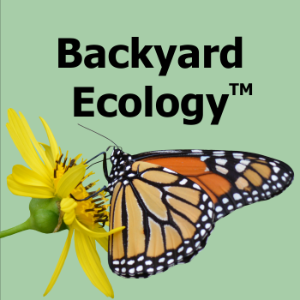
Backyard Ecology™
Science
Nature isn't just "out there" in some pristine, far-off location. It's all around us, including right outside our doors. Hi, my name is Shannon Trimboli and I'm here to help busy homeowners in the eastern U.S. create thriving backyard ecosystems they can enjoy and be proud of. Join us as we ignite our curiosity and natural wonder, explore our yards and communities, and improve our local pollinator and wildlife habitat. Learn more at: https://www.backyardecology.net/podcast
Location:
United States
Genres:
Science
Description:
Nature isn't just "out there" in some pristine, far-off location. It's all around us, including right outside our doors. Hi, my name is Shannon Trimboli and I'm here to help busy homeowners in the eastern U.S. create thriving backyard ecosystems they can enjoy and be proud of. Join us as we ignite our curiosity and natural wonder, explore our yards and communities, and improve our local pollinator and wildlife habitat. Learn more at: https://www.backyardecology.net/podcast
Language:
English
Website:
https://www.backyardecology.net/
Short’s aster: A beautiful late season extravaganza for pollinators
Duration:00:07:24
The Science Behind "Leave the Leaves"
Duration:00:47:52
Black-eyed Susan: A must-have for the pollinator garden
Duration:00:09:04
A Bad Naturalist’s Journey to Restore a Mountaintop Meadow
Duration:01:22:44
Native Plants That Attract Hummingbirds to Eastern U.S. Gardens
Duration:00:13:24
Gardening for Moths: Why It’s Important for Backyard Conservation
Duration:01:11:36
9 Native Blueberries You Can Grow in the Home Landscape
Duration:00:14:29
Choose the Best Native Milkweed for Your Eastern U.S. Garden
Duration:00:19:34
Laurel Wilt: How Tiny Beetles Can Kill Huge Trees
Duration:01:17:55
Virginia strawberry: A Beautiful, Tasty, and Underutilized Native Groundcover
Duration:00:06:07
Ironweed’s Beauty and Ecological Value in Your Garden: Mt. Cuba’s Vernonia Trial
Duration:00:57:06
Eastern Carpenter Bees: How to Peacefully Co-exist and Why They Are Important
Duration:00:15:14
Doug Tallamy’s Habitat Restoration Story and How You Can Help Save Nature
Duration:00:49:08
Darkness Matters: Light Pollution’s Threats and Simple Ways to Help
Duration:00:10:42
BirdCast: Revealing the Mysteries of Bird Migration
Duration:01:14:25
How to Do Spring Garden Cleanup for Pollinators and Wildlife
Duration:00:10:46
Exploring the Fascinating World of Ground Nesting Bees
Duration:00:46:48
How to Attract More Birds to Your Yard
Duration:00:08:25
From Suburban Yard to Wildlife Haven: Amanda’s Story
Duration:00:43:13
We’re back!
Duration:00:03:26